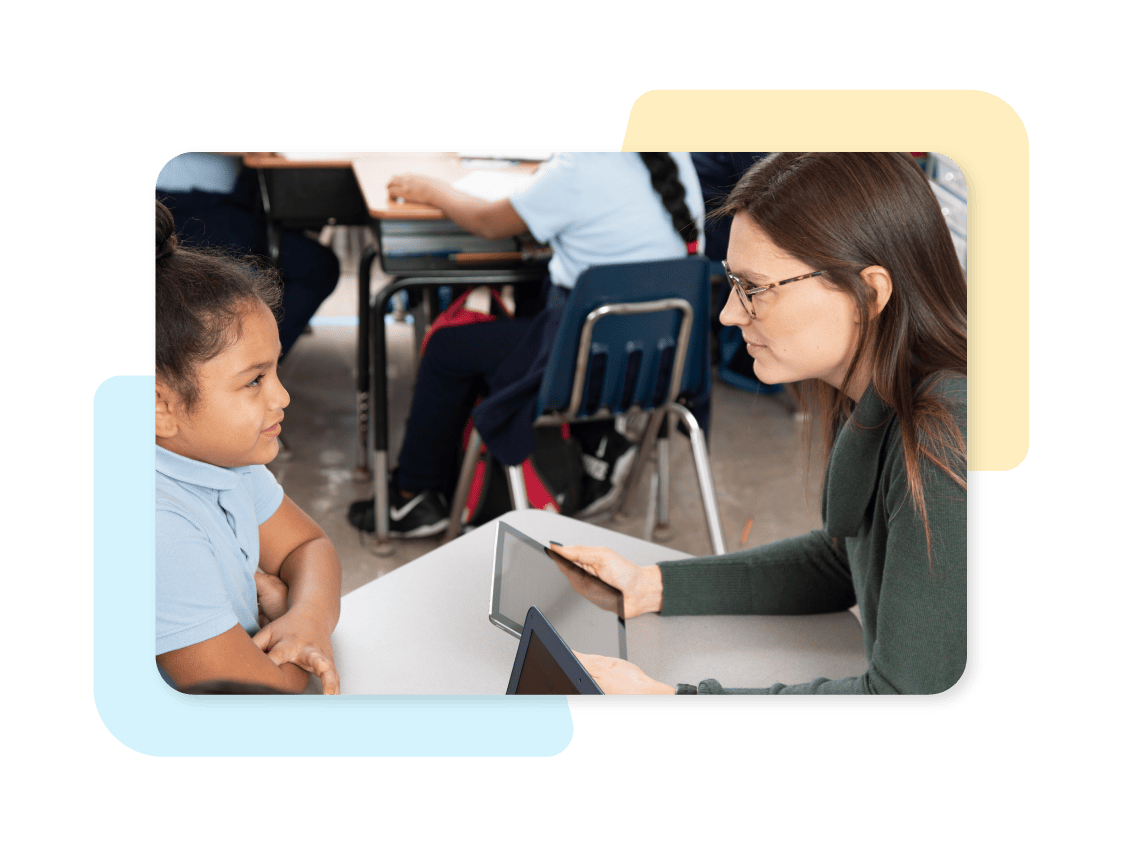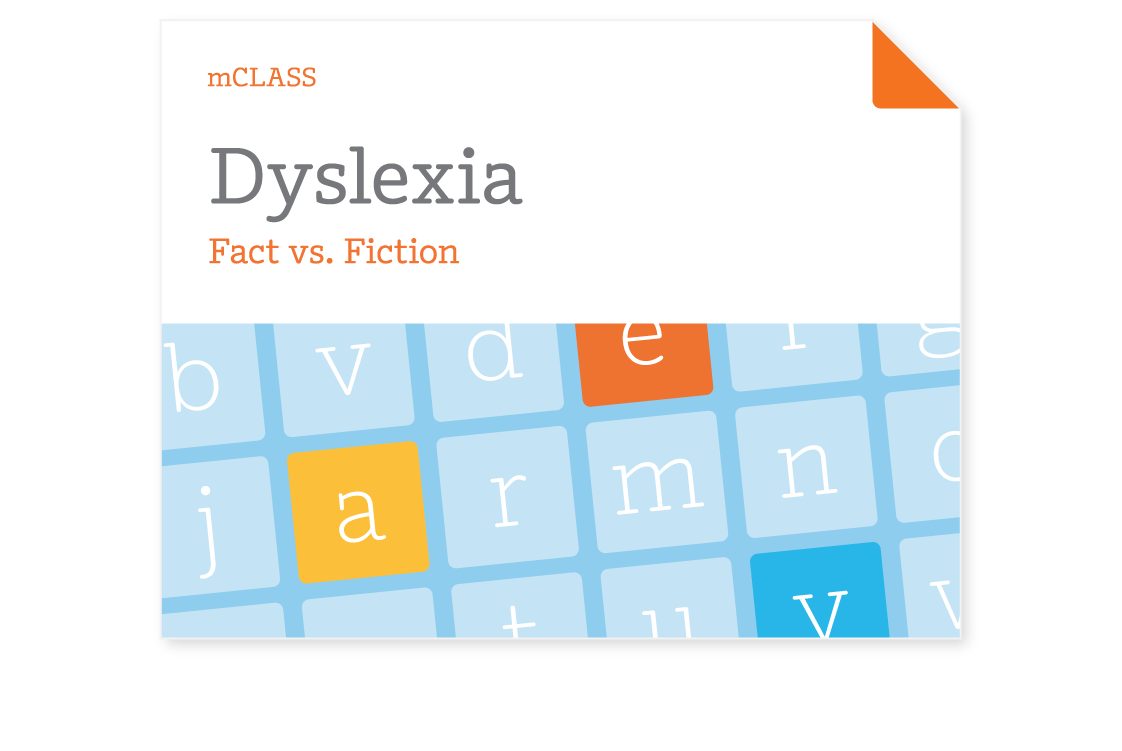Dyslexia and the Science of Reading: Finding kids at risk and helping them read
The Science of Reading is also the science of reading struggles. Research helps us identify kids with challenges or at risk for learning disabilities, and helps us offer effective interventions that will make a difference.
Amplify understands the power of early assessment and early intervention. mCLASS®, built on the Science of Reading, offers an evidence-based solution that can flag reading risk and difficulties associated with dyslexia. Getting students on the right track early is crucial to unlocking the potential of all students to read at their best.

What is dyslexia?
Here’s the definition of dyslexia developed by the International Dyslexia Association (IDA) and adopted by many state education codes.
Dyslexia is a specific learning disability that is neurobiological in origin. It is characterized by difficulties with accurate and/or fluent word recognition and by poor spelling and decoding abilities.
Learn more
Key signs of dyslexia
Difficulties with phonological processing—such as phonemic awareness and decoding skills—are hallmark characteristics of dyslexia.

Key signs also include difficulty with:
- Understanding the sounds in words
- Reading fluently
- Spelling, rhyming, and sequencing information
- Finding the right words when speaking
Prevalence of dyslexia
According to the IDA, between 15 and 20 percent of the U.S. population exhibits characteristics of dyslexia. With this in mind, it’s crucial educators have dyslexia resources that help all of their students be successful.

Importance of early identification and early intervention
Research shows that students who struggle to read in third grade are at high risk of continued struggle … and academic failure. And according to the National Assessment of Educational Progress (NAEP), only 33 percent of U.S. fourth graders are proficient in reading. We need to help students with dyslexia, and we need to start early.
Dyslexia can’t be “cured,” but it can be identified and successfully addressed, starting as early as kindergarten. Students with dyslexia do have the potential to read at grade level when they have access to early intervention, targeted supports, and a structured curriculum. A University of Washington study found that only eight weeks of specialized instruction strengthened students’ neural circuitry—and improved reading performance.
Learn more
-
Reading trajectories
-
Early intervention
-
Intensive intervention
What dyslexia looks like
Signs of dyslexia may emerge before children start school, but they become more apparent in the classroom.

They may include the following:
- Delay in learning tasks such as tying shoes and telling time
- Difficulty expressing oneself
- Inattentiveness, distractibility
- Difficulty with following directions
- Left-right confusion
- Difficulty learning alphabet, times tables, song lyrics
- Difficulty with rhyming
- Poor playground skills
- Difficulty learning to read
- Mixing orders of letters or numbers when writing
- Reversing letters or numbers
Dyslexia legislation across the United States

Recent efforts to increase awareness of and protections for those with dyslexia and other reading difficulties have triggered major shifts in state-level educational legislation. According to the National Center on Improving Literacy, 49 states have passed laws addressing dyslexia in public schools. Common themes in the legislation:
- Increased emphasis on intervention
- Dyslexia screening procedures
- Adoption of multi-tiered systems of support (MTSS)
- The use of explicit instruction
- Changes to teacher preparation and training
- Establishing rights for individuals with dyslexia (e.g., creating state task forces to study educational issues/needs)
- Preventing the use of dyslexia screening requirements to supplant or postpone IDEA or Section 504 eligibility determination process.
How does mCLASS help you screen for students at risk?
Amplify’s mCLASS system includes DIBELS® 8th Edition’s teacher-administered one-minute measures and other built-in dyslexia screeners, as well as intervention and robust reports for teachers and administrators. It’s all you need to monitor and support every student in your classroom.

The most critical early reading skills—including phonemic awareness, the alphabetic principle, and oral reading fluency (Good, Simmons, & Kame’enui, 2001; National Reading Panel, 2000; Torgesen, 2002)—are best measured through direct observation. This is a key feature of mCLASS’s content validity. Early literacy skills, defined as the ability to translate letters to sounds and combine sounds to read and comprehend, are directly measured in mCLASS through a student’s active production of sounds and words, ultimately followed by reading and demonstrating comprehension
Groups driving change
The following organizations advocate for dyslexia legislation, supports, and other early literacy efforts:
-
Decoding Dyslexia
-
International Dyslexia Association
-
University of Oregon Center on Teaching and Learning
-
National Center on Improving Literacy